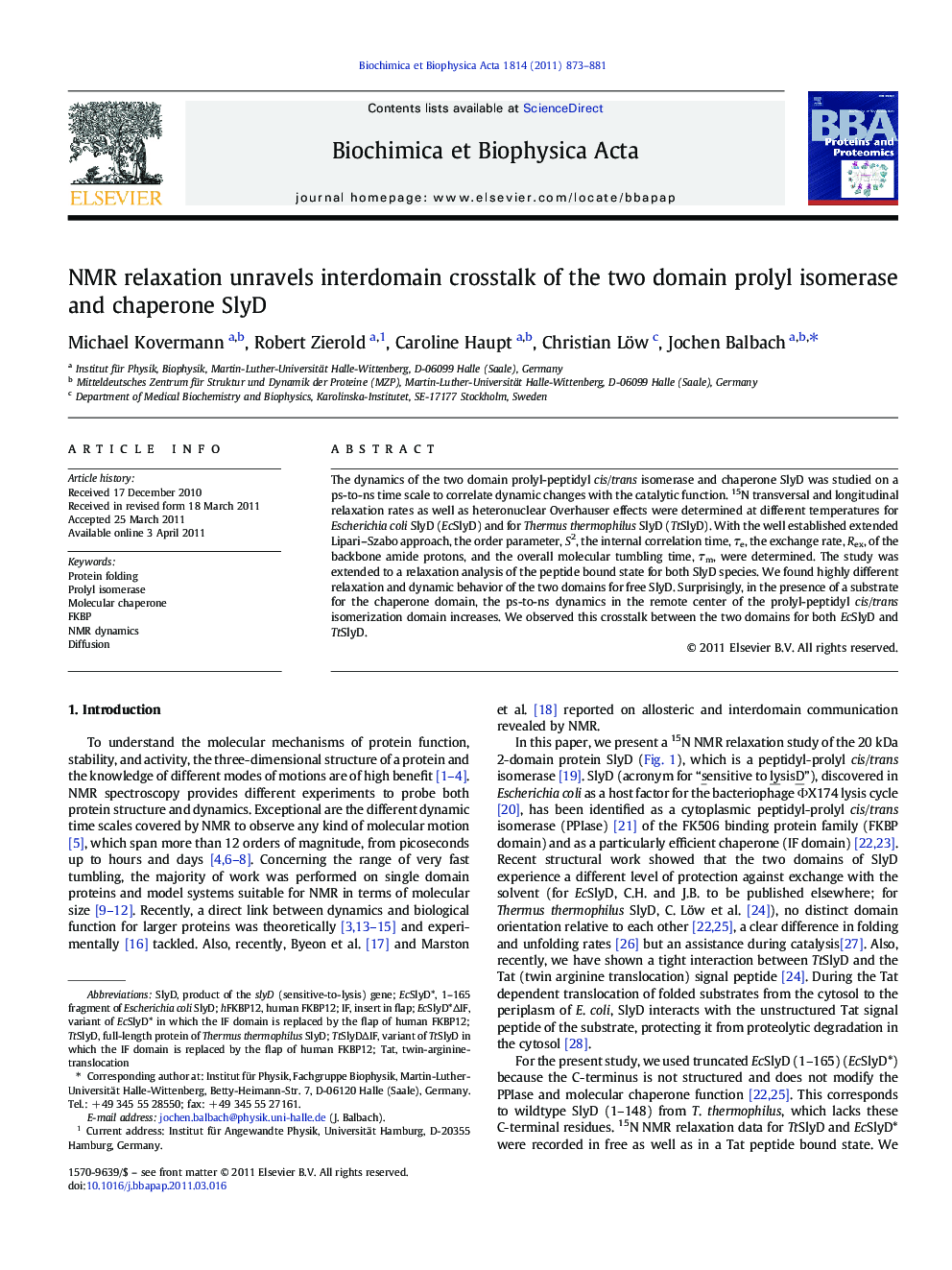| Article ID | Journal | Published Year | Pages | File Type |
|---|---|---|---|---|
| 1177870 | Biochimica et Biophysica Acta (BBA) - Proteins and Proteomics | 2011 | 9 Pages |
The dynamics of the two domain prolyl-peptidyl cis/trans isomerase and chaperone SlyD was studied on a ps-to-ns time scale to correlate dynamic changes with the catalytic function. 15N transversal and longitudinal relaxation rates as well as heteronuclear Overhauser effects were determined at different temperatures for Escherichia coli SlyD (EcSlyD) and for Thermus thermophilus SlyD (TtSlyD). With the well established extended Lipari–Szabo approach, the order parameter, S2, the internal correlation time, τe, the exchange rate, Rex, of the backbone amide protons, and the overall molecular tumbling time, τm, were determined. The study was extended to a relaxation analysis of the peptide bound state for both SlyD species. We found highly different relaxation and dynamic behavior of the two domains for free SlyD. Surprisingly, in the presence of a substrate for the chaperone domain, the ps-to-ns dynamics in the remote center of the prolyl-peptidyl cis/trans isomerization domain increases. We observed this crosstalk between the two domains for both EcSlyD and TtSlyD.
Research highlights►The domain communication of the 2-domain protein SlyD has been examined by NMR relaxation. ►An extended set of relaxation and diffusion data of mesophilic and thermophilic SlyD has been analyzed. ►Dynamic parameter could be derived from the free and substrate bound state. ►Surprisingly, substrate binding in the remote IF domain increases the local flexibility of the active site in the FKBP domain. ►Chemical shift changes are not sensitive enough to reveal this interdomain communication.
